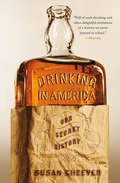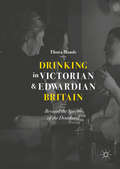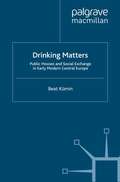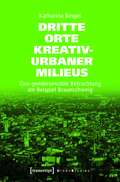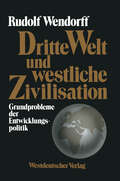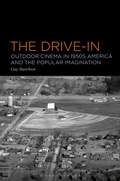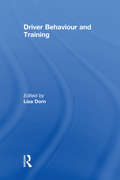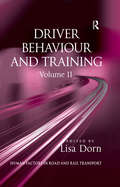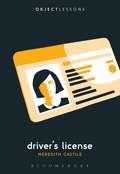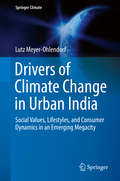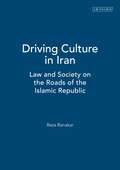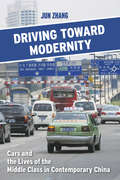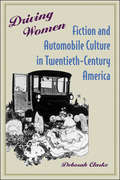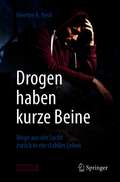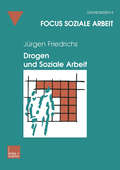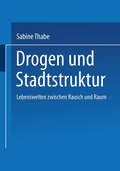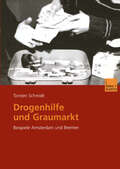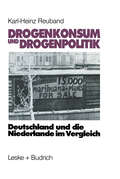- Table View
- List View
Drinking in America: Our Secret History
by Susan CheeverIn Drinking in America, bestselling author Susan Cheever chronicles our national love affair with liquor, taking a long, thoughtful look at the way alcohol has changed our nation's history. This is the often-overlooked story of how alcohol has shaped American events and the American character from the seventeenth to the twentieth century. Seen through the lens of alcoholism, American history takes on a vibrancy and a tragedy missing from many earlier accounts. From the drunkenness of the Pilgrims to Prohibition hijinks, drinking has always been a cherished American custom: a way to celebrate and a way to grieve and a way to take the edge off. At many pivotal points in our history-the illegal Mayflower landing at Cape Cod, the enslavement of African Americans, the McCarthy witch hunts, and the Kennedy assassination, to name only a few-alcohol has acted as a catalyst. Some nations drink more than we do, some drink less, but no other nation has been the drunkest in the world as America was in the 1830s only to outlaw drinking entirely a hundred years later. Both a lively history and an unflinching cultural investigation, Drinking in America unveils the volatile ambivalence within one nation's tumultuous affair with alcohol.
Drinking in Victorian and Edwardian Britain (PDF): Beyond the Spectre of the Drunkard
by Thora HandsThis open access book surveys drinking in Britain between the Licensing Act of 1869 and the wartime regulations imposed on alcohol production and consumption after 1914. This was a period marked by the expansion of the drink industry and by increasingly restrictive licensing laws. Politics and commerce co-existed with moral and medical concerns about drunkenness and combined, these factors pushed alcohol consumers into the public spotlight. Through an analysis of public and private records, medical texts and sociological studies, the book investigates the reasons why Victorians and Edwardians consumed alcohol in the ways that they did and explores the ideas about alcohol that circulated in the period. This book shows that they had many reasons for purchasing and consuming alcoholic substances and these were driven by broader social, cultural, medical and commercial factors. Although drunkenness may have been the most visible consequence of alcohol consumption, it was not the only type of drinking behaviour. Alcohol played an important social role in the everyday lives of Victorians and Edwardians where its consumption held many different meanings.
Drinking Matters: Public Houses and Social Exchange in Early Modern Central Europe (Early Modern History: Society and Culture)
by B. KüminOffering the first comparative survey of public houses in pre-industrial Europe and drawing on a vast range of primary sources, this study establishes inns and taverns as principal communication sites in local communities. Contested and continuously renegotiated, they catered for basic human needs as well as infinite forms of social exchange.
Dritte Orte kreativ-urbaner Milieus: Eine gendersensible Betrachtung am Beispiel Braunschweig (Urban Studies)
by Katharina BingelKreativität ist ein Produkt sozialer Austauschprozesse, die auch im digitalen Zeitalter noch an konkreten, physischen Orten stattfinden. Für eine erfolgreiche Stadtentwicklung ist es daher erforderlich, die Produktionsorte der Kreativität zu identifizieren und zu stärken. Mithilfe qualitativer Methoden deckt Katharina Bingel die Mechanismen von Entstehung, Aneignung und Bedeutungszunahme von Dritten Orten kreativ-urbaner Milieus unter Berücksichtigung sozialer In- und Exklusionslinien auf. Dabei fragt sie nach der sozialen Produktion Dritter Orte im Zusammenspiel mit dem physischen Raum und leitet daraus Implikationen für eine nachhaltige Stadtentwicklung ab.
Dritte Welt und westliche Zivilisation: Grundprobleme der Entwicklungspolitik
by Rudolf Wendorff"(...) Ein Buch, das man zu den ganz großen entwicklungsgerichteten Entwürfen unserer Zeit rechnen muß - ein Buch, das man nicht übersehen darf und nicht übersehen kann."Politische Studien 7-8/1986
The Drive-In: Outdoor Cinema in 1950s America and the Popular Imagination
by Dr Guy BarefootThe Drive-In meaningfully contributes to the complex picture of outdoor cinema that has been central to American culture and to a history of US cinema based on diverse viewing experiences rather than a select number of films. Drive-in cinemas flourished in 1950s America, in some summer weeks to the extent that there were more cinemagoers outdoors than indoors. Often associated with teenagers interested in the drive-in as a 'passion pit' or a venue for exploitation films, accounts of the 1950s American drive-in tend to emphasise their popularity with families with young children, downplaying the importance of a film programme apparently limited to old, low-budget or independent films and characterising drive-in operators as industry outsiders. They retain a hold on the popular imagination. The Drive-In identifies the mix of generations in the drive-in audience as well as accounts that articulate individual experiences, from the drive-in as a dating venue to a segregated space. Through detailed analysis of the film industry trade press, local newspapers and a range of other primary sources including archival records on cinemas and cinema circuits in Arkansas, California, New York State and Texas, this book examines how drive-ins were integrated into local communities and the film industry and reveals the importance and range of drive-in programmes that were often close to that of their indoor neighbours.
The Drive-In: Outdoor Cinema in 1950s America and the Popular Imagination
by Dr Guy BarefootThe Drive-In meaningfully contributes to the complex picture of outdoor cinema that has been central to American culture and to a history of US cinema based on diverse viewing experiences rather than a select number of films. Drive-in cinemas flourished in 1950s America, in some summer weeks to the extent that there were more cinemagoers outdoors than indoors. Often associated with teenagers interested in the drive-in as a 'passion pit' or a venue for exploitation films, accounts of the 1950s American drive-in tend to emphasise their popularity with families with young children, downplaying the importance of a film programme apparently limited to old, low-budget or independent films and characterising drive-in operators as industry outsiders. They retain a hold on the popular imagination. The Drive-In identifies the mix of generations in the drive-in audience as well as accounts that articulate individual experiences, from the drive-in as a dating venue to a segregated space. Through detailed analysis of the film industry trade press, local newspapers and a range of other primary sources including archival records on cinemas and cinema circuits in Arkansas, California, New York State and Texas, this book examines how drive-ins were integrated into local communities and the film industry and reveals the importance and range of drive-in programmes that were often close to that of their indoor neighbours.
Driver Behaviour and Training
by Lisa DornThis title was first published in 2003. Research on driver behaviour over the past two decades has demonstrated that driver characteristics, goals and motivations are important determinants of driving behaviour. We are now in a position to apply this knowledge to driver training programs and evaluate their effectiveness in improving safety. The main objective for the First International Conference on Driver Behaviour and Training and this book, is to describe and discuss recent advances in this field. The book bridges the gap between practitioners in road safety, and theoreticians investigating driving behaviour from a number of different perspectives and related disciplines. It will encourage research in driver training to combat erroneous or deviant driving behaviour and/or reduce the effects of human error at source. This book will be of interest to road safety researchers and road safety practitioners in the private and public sector.
Driver Behaviour and Training
by Lisa DornThis title was first published in 2003. Research on driver behaviour over the past two decades has demonstrated that driver characteristics, goals and motivations are important determinants of driving behaviour. We are now in a position to apply this knowledge to driver training programs and evaluate their effectiveness in improving safety. The main objective for the First International Conference on Driver Behaviour and Training and this book, is to describe and discuss recent advances in this field. The book bridges the gap between practitioners in road safety, and theoreticians investigating driving behaviour from a number of different perspectives and related disciplines. It will encourage research in driver training to combat erroneous or deviant driving behaviour and/or reduce the effects of human error at source. This book will be of interest to road safety researchers and road safety practitioners in the private and public sector.
Driver Behaviour and Training: Volume 2
by Lisa DornResearch on driver behaviour over the past two decades has clearly demonstrated that the goals and motivations a driver brings to the driving task are important determinants for driver behaviour. The importance of this work is underlined by statistics: WHO figures show that road accidents are predicted to be the number three cause of death and injury by 2020 (currently more than 20 million deaths and injuries p.a.). The objective of this second edition, and of the conference on which it is based, is to describe and discuss recent advances in the study of driving behaviour and driver training. It bridges the gap between practitioners in road safety, and theoreticians investigating driving behaviour, from a number of different perspectives and related disciplines. A major focus is to consider how driver training needs to be adapted, to take into account driver characteristics, goals and motivations, in order to raise awareness of how these may contribute to unsafe driving behaviour, and to go on to promote the development of driver training courses that considers all the skills that are essential for road safety. As well as setting out new approaches to driver training methodology based on many years of empirical research on driver behaviour, the contributing road safety researchers and professionals consider the impact of human factors in the design of driver training as well as the traditional skills-based approach. Readership includes road safety researchers from a variety of different academic backgrounds, senior practitioners in the field of driver training from regulatory authorities and professional driver training organizations such as the police service, and private and public sector personnel who are concerned with improving road safety.
Driver Behaviour and Training: Volume 2
by Lisa DornResearch on driver behaviour over the past two decades has clearly demonstrated that the goals and motivations a driver brings to the driving task are important determinants for driver behaviour. The importance of this work is underlined by statistics: WHO figures show that road accidents are predicted to be the number three cause of death and injury by 2020 (currently more than 20 million deaths and injuries p.a.). The objective of this second edition, and of the conference on which it is based, is to describe and discuss recent advances in the study of driving behaviour and driver training. It bridges the gap between practitioners in road safety, and theoreticians investigating driving behaviour, from a number of different perspectives and related disciplines. A major focus is to consider how driver training needs to be adapted, to take into account driver characteristics, goals and motivations, in order to raise awareness of how these may contribute to unsafe driving behaviour, and to go on to promote the development of driver training courses that considers all the skills that are essential for road safety. As well as setting out new approaches to driver training methodology based on many years of empirical research on driver behaviour, the contributing road safety researchers and professionals consider the impact of human factors in the design of driver training as well as the traditional skills-based approach. Readership includes road safety researchers from a variety of different academic backgrounds, senior practitioners in the field of driver training from regulatory authorities and professional driver training organizations such as the police service, and private and public sector personnel who are concerned with improving road safety.
Driver's License (Object Lessons)
by Meredith CastileObject Lessons is a series of short, beautifully designed books about the hidden lives of ordinary things. A classic teenage fetish object, the American driver's license has long symbolized freedom and mobility in a nation whose design assumes car travel and whose vastness rivals continents. It is youth's pass to regulated vice-cigarettes, bars, tattoo parlors, casinos, strip joints, music venues, guns. In its more recent history, the license has become increasingly associated with freedom's flipside: screening. The airport's heightened security checkpoint. Controversial ID voting laws. Federally mandated, anti-terrorist driver's license re-designs. The driver's license encapsulates the contradictory values and practices of contemporary American culture-freedom and security, mobility and checkpoints, self-definition and standardization, democracy and exclusion, superficiality and intimacy, the stable self and the self in flux.Object Lessons is published in partnership with an essay series in the The Atlantic.
Driver's License (Object Lessons)
by Meredith CastileObject Lessons is a series of short, beautifully designed books about the hidden lives of ordinary things. A classic teenage fetish object, the American driver's license has long symbolized freedom and mobility in a nation whose design assumes car travel and whose vastness rivals continents. It is youth's pass to regulated vice-cigarettes, bars, tattoo parlors, casinos, strip joints, music venues, guns. In its more recent history, the license has become increasingly associated with freedom's flipside: screening. The airport's heightened security checkpoint. Controversial ID voting laws. Federally mandated, anti-terrorist driver's license re-designs. The driver's license encapsulates the contradictory values and practices of contemporary American culture-freedom and security, mobility and checkpoints, self-definition and standardization, democracy and exclusion, superficiality and intimacy, the stable self and the self in flux.Object Lessons is published in partnership with an essay series in the The Atlantic.
Drivers of Climate Change in Urban India: Social Values, Lifestyles, and Consumer Dynamics in an Emerging Megacity (Springer Climate)
by Lutz Meyer-OhlendorfThis study transcends the homogenizing (inter-)national level of argumentation (‘rich’ versus ‘poor’ countries), and instead looks at a sub-national level in two respects: (1) geographically it focuses on the rapidly growing megacity of Hyderabad; (2) in socio-economic terms the urban population is disaggregated by taking a lifestyle typology approach. For the first time, the lifestyle concept – traditionally being used in affluent consumer societies – is applied to a dynamically transforming and socially heterogeneous urban society. Methodically, the author includes India-specific value orientations as well as social practices as markers of social structural differentiation. The study identifies differentials of lifestyle-induced GHG emissions (carbon footprints) and underlines the ambiguity of a purely income based differentiation with regard to the levels of contribution to the climate problem.
Driving Culture in Iran: Law and Society on the Roads of the Islamic Republic (International Library of Iranian Studies)
by Reza BanakarReza Banakar is Professor and Director of Research in the Sociology of Law Department at Lund University. He has previously held the positions of Professor of Socio-Legal Studies at the Department of Advanced Legal Studies at the University of Westminster and Research Fellow at the Centre for Socio-Legal Studies at the University of Oxford. He is the author of Normativity in Legal Sociology (2015) and Law and Social Theory (2010, 2013).
Driving Decisions: How Autonomous Vehicles Make Sense of the World
by Sam HindDriving Decisions: How Autonomous Vehicles Make Sense of the World examines the phenomenon of autonomous driving, and the ongoing, complex, costly, and contentious quest to automate driving. Principally organized around the concept of algorithmic decision-making, the book considers how different mapping, sensing, and machine learning (ML)-dependent capabilities are gifted to autonomous vehicles through different kinds of technical work: from computer science students annotating visual data in industry-funded research centres to software engineers designing ‘end-to-end’ ML models at autonomous vehicle start-ups. The book intends to complicate, and question, typical understandings of autonomous driving by going ‘under the hood’, challenging the technological determinism or ‘decisionism’ that advocates offer of an inevitable, fully automated, future. Drawing on seven years of research in a range of empirical contexts, the book will appeal to scholars and students in the fields of science and technology studies, media studies, digital sociology, human geography, and mobilities and transport studies.
Driving Forensic Innovation in the 21st Century: Crossing the Valley of Death
by Simona Francese Roberto S. P. KingThis contributed volume offers a comprehensive and multifaceted understanding of the current forensic innovation, landscape, enablers, road blockers, and barriers to implementation. It also presents all aspects that need consideration to cross the valley of death between an idea and its successful implementation. It uniquely merges the technical and scientific aspects of some of the innovations that have been implemented across forensic science within the National and International landscape and with i) the necessary considerations to take into account on the road to success, such as business planning, data privacy, and legal and regulatory aspects, ii) the end-users perspective and iii) the industry perspective. Case studies illustrate "what success looks like" by discussing forensic innovations that have made it to the market and have subsequently impacted positively on criminal investigations. This book acts as a platform to facilitate the dialogue between key stakeholders in driving innovation namely academia, industry, and end-users as well as indicating a roadmap to facilitate practical developments, whilst serving as a revolutionary springboard to initiate an innovation-transforming paradigm shift. This volume is a valuable contribution to the field and is of great interest to graduates and researchers engaged in forensic science, forensic service providers and manufacturers as well as policymakers.
Driving toward Modernity: Cars and the Lives of the Middle Class in Contemporary China
by Jun ZhangIn Driving toward Modernity, Jun Zhang ethnographically explores the entanglement between the rise of the automotive regime and emergence of the middle class in South China. Focusing on the Pearl River Delta, one of the nation's wealthiest regions, Zhang shows how private cars have shaped everyday middle-class sociality, solidarity, and subjectivity, and how the automotive regime has helped make the new middle classes of the PRC. By carefully analyzing how physical and social mobility intertwines, Driving toward Modernity paints a nuanced picture of modern Chinese life, comprising the continuity and rupture as well as the structure and agency of China's great transformation.
Driving Women: Fiction and Automobile Culture in Twentieth-Century America
by Deborah ClarkeOver the years, cars have helped to define the experiences and self-perceptions of women in complex and sometimes unexpected ways. When women take the wheel, family structure and public space are reconfigured and re-gendered, creating a context for a literary tradition in which the car has served as a substitute for, an escape from, and an extension of the home, as well as a surrogate mother, a financial safeguard, and a means of self-expression.Driving Women examines the intersection of American fiction—primarily but not exclusively by women—and automobile culture. Deborah Clarke argues that issues critical to twentieth-century American society—technology, mobility, domesticity, and agency—are repeatedly articulated through women's relationships with cars. Women writers took surprisingly intense interest in car culture and its import for modern life, as the car, replete with material and symbolic meaning, recast literal and literary female power in the automotive age. Clarke draws on a wide range of literary works, both canonical and popular, to document women's fascination with cars from many perspectives: historical, psychological, economic, ethnic. Authors discussed include Wharton, Stein, Faulkner, O’Connor, Morrison, Erdrich, Mason, Kingsolver, Lopez, Kadohata, Smiley, Senna, Viramontes, Allison, and Silko. By investigating how cars can function as female space, reflect female identity, and reshape female agency, this engaging study opens up new angles from which to approach fiction by and about women and traces new directions in the intersection of literature, technology, and gender.
Drogen haben kurze Beine: Wege aus der Sucht zurück in ein stabiles Leben
by Nevriye A. YesilDrogen haben kurze Beine! Sie lügen jedes Mal von Neuem und vermitteln Gefühle, Emotionen und Eindrücke, die nicht echt sind. Und obwohl nicht echt, erschaffen sie eine körperliche und psychische Abhängigkeit.Dieser Ratgeber bietet Menschen mit einer Drogensucht und deren Angehörigen wichtige Fakten rund um das Thema Drogen und Abhängigkeit und zeigt psychologische Wege und Methoden auf, von der Sucht loszukommen. Dieses Buch klärt über verschiedene Substanzen auf – von Medikamenten, Alkohol und Nikotin bis hin zu illegalen Drogen wie Kokain und Heroin –, motiviert und begleitet bei der Entscheidung, sich von Drogen zu lösen. Es bietet hilfreiche Tipps und Methoden zur Rückfallprävention und zeigt, wie Angehörige bei der Bekämpfung einer Sucht helfen können.
Drogen und Soziale Arbeit (Focus Soziale Arbeit #4)
by Juergen FriedrichsDieses Buch bietet in sprachlich verständlicher Form einen historischen und aktuellen Einblick in alle relevanten Aspekte der Drogenproblematik: Der nahezu unüberschaubare Bestand an Theorien und der hieraus entwickelten praktischen Konzeption zum Konsum verbotener Drogen wird systematisiert, bewertet und einem breiten Publikum vorgestellt. Vor allem den sozialen und pädagogischen Berufen wird mit diesem Buch eine grundlegende und praxisrelevante Einführung gegeben.
Drogen und Sucht: Eine Einführung (Basiswissen Kriminologie)
by Henning Schmidt-SemischNicht erst die jüngsten Diskussionen zu Cannabis zeigen, dass die Themen Drogen und Sucht polarisieren. Dabei werden die verschiedenen Drogen (etwa Alkohol, Cannabis oder Heroin) moralisch und rechtlich völlig unterschiedlich bewertet, wobei diese Bewertungen sich von Kultur zu Kultur unterscheiden und auch historisch äußerst wandelbar sind. In vielen Bereichen dominiert weiterhin eine kriminal- und sicherheitspolitische Herangehensweise, wobei zunehmend aber auch gesundheitspolitische Überlegungen im Sinne einer akzeptierenden Drogenpolitik relevant werden. Der Band führt in grundlegende Aspekte aus den Bereichen Drogen und Sucht ein und gibt einen kompakten, informativen Überblick über wichtige Etappen und wissenschaftliche Befunde zu Drogengeschichte, Drogenforschung und Drogenpolitik.
Drogenhilfe und Graumarkt: Beispiele Amsterdam und Bremen
by Torsten SchmidtDas Buch beschäftigt sich für Deutschland erstmalig mit einem bisher in der wissenschaftlichen Drogenforschung separat nicht bearbeiteten Feld der Drogenproblematik, dem Straßenverkauf von Substitutionsmitteln und Psychopharmaka auf der Drogenszene. Angesichts der momentanen Diskussion um die sogenannten "Methadon-Toten" ein aktuelles Thema. Gleichwohl fragt das Buch nach dem Nutzen und dem Risiko dieser in der Drogenhilfe ungewünschten Selbstmedikation für Drogenkonsumenten.
Drogenkonsum und Drogenpolitik: Deutschland und die Niederlande im Vergleich
by Karl-Heinz ReubandEs zählt zu den Merkwürdigkeiten der neueren Diskussion, wie sehr das Drogenphänomen als länderübergreifendes Problem wahrgenommen wird und wie wenig gleichzeitig über die Drogenproblematik und Drogenpolitik in anderen Ländern bekannt ist. Bloße Annahmen, die wie gesicherte wis senschaftliche Erkenntnisse behandelt und nicht mehr hinterfragt werden, bestimmen die Diskussion. Wohl nirgends wird dies deutlicher als im Fall der Bundesrepublik Deutschland und der Niederlande. Beide Länder verfol gen gegenüber dem Drogengebrauch eine unterschiedliche Strategie: Wäh rend in der Bundesrepublik der Besitz und Erwerb von Cannabis strafrecht lich geahndet wird, wird in den Niederlanden eine Politik der Tolerierung, ja gar der gesellschaftlichen Akzeptanz betrieben. Aus Sicht vieler, wenn nicht gar der meisten bundesdeutschen Autoren, muß eine derartige liberale Politik zwangsläufig den Drogengebrauch und drogenbedingte Probleme begünstigen. Doch aus Sicht vieler holländischer Autoren bewirkt sie genau das Gegenteil: eine Abnahme der Konsumentenzahlen, eine Trennung des Marktes für weiche und harte Drogen und eine Reduktion drogenbedingter Probleme. Die Selbstverständlichkeit, mit der in den beiden Ländern die eigenen Deutungen vorgebracht werden, ist bemerkenswert. Daß sie im Wider spruch zu den Deutungen in anderen Ländern -gar des Nachbarlande- stehen, wird in der Regel nicht zur Kenntnis genommen. Weder gibt es eine Diskussion über die unterschiedlichen "Realitäts"beschreibungen noch deren Überprüfung anhand empirischer Belege. Maßgeblich verantwortlich für diese Situation ist die verbreitete Neigung, den Drogengebrauch auch dort primär unter einer wertgeladenen Perspektive zu sehen, wo es um Sachaussagen gehl Argumente moralischer und politischer Natur ersetzen unter diesen Umständen die wissenschaftliche Auseinandersetzung.
